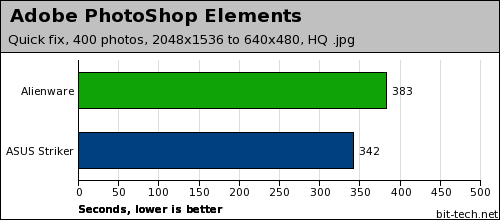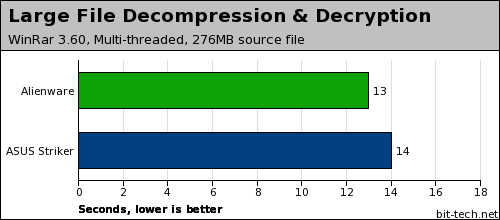
Testing methodology
To test the Alienware system, we put it through the same tests as our recent review of the ASUS Striker Extreme. This means file compression, Xvid encoding, PhotoShop work and audio encoding.The base components are the same - 2GB of RAM, X6800 etc (check out the full specs of the ASUS here).
To test 3D performance, we realised there wasn't going to be much to say - we already know how stunningly fast the GeForce 8800 is, especially in combination with the X6800. We thought it would be more interesting to test the 8800 in SLI against single card, seeing what difference it makes in an ϋber system such as this Alienware.
So, that's what we did.
On with the benchmarks...
Adobe Photoshop Elements 4.0
For our Photoshop Elements test, we used a selection of 400 3MP photographs taken in a variety of surroundings using the batch file processing function in the Elements Editor. We performed all of the auto fixes, including Auto Levels, Auto Contrast, Auto Colour and Sharpen before resizing the image to 640x480 and saving as a high quality JPEG.
File Compression & Encryption, Decompression and Decryption:
For out compression and decompression test, we compressed and encrypted the MPEG-2 source file from our video encoding test with the highest quality compression ratio into a RAR archive, then decompressed it back again.


MSI MPG Velox 100R Chassis Review
October 14 2021 | 15:04








Want to comment? Please log in.